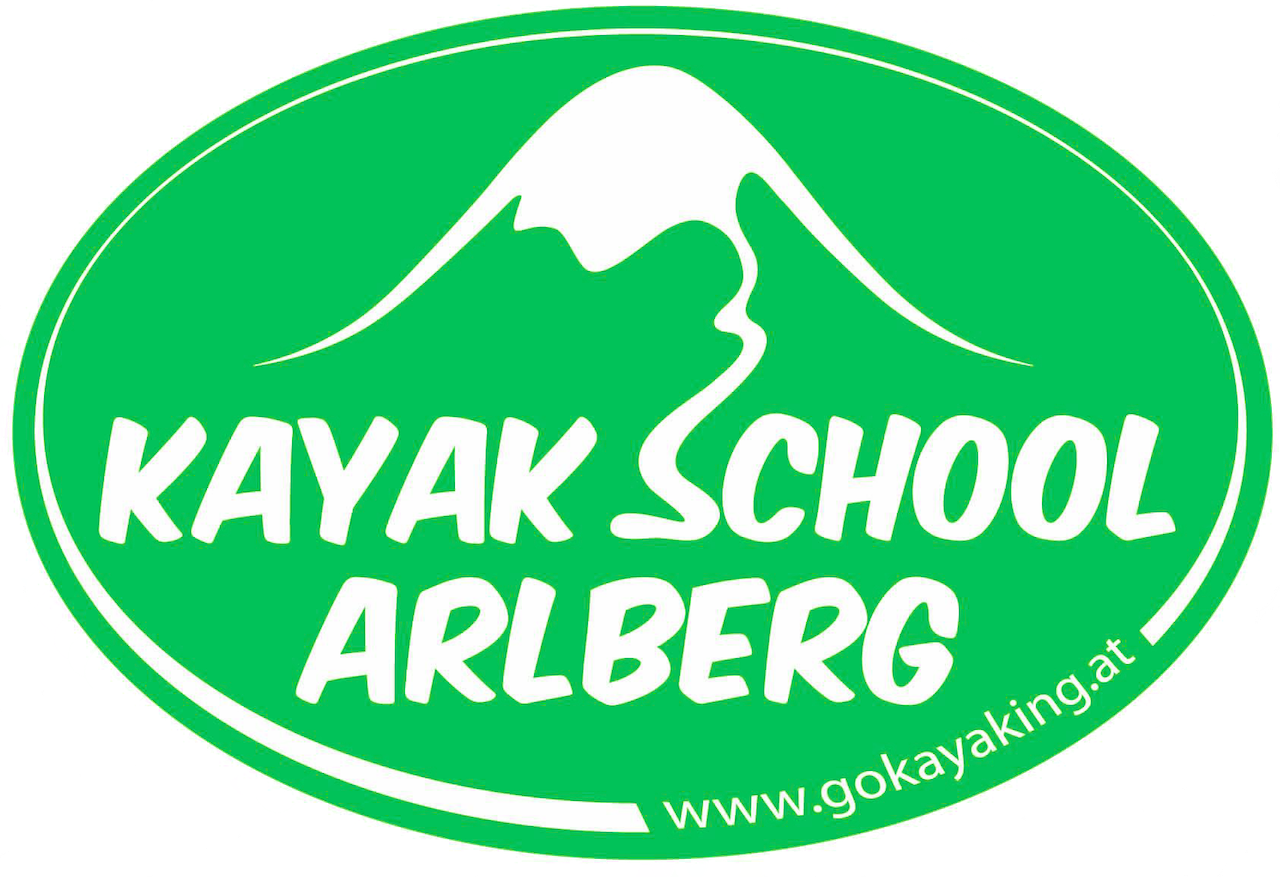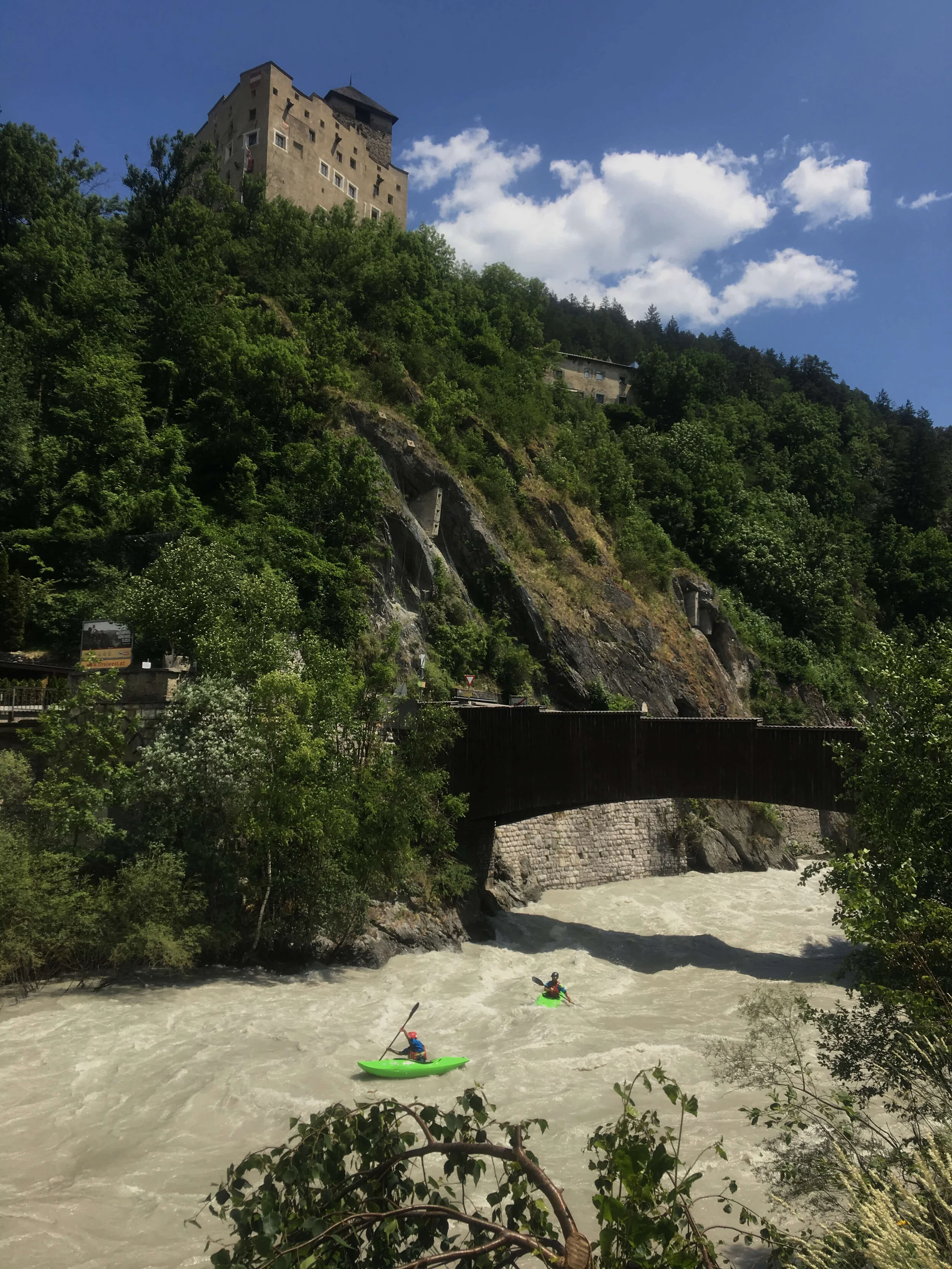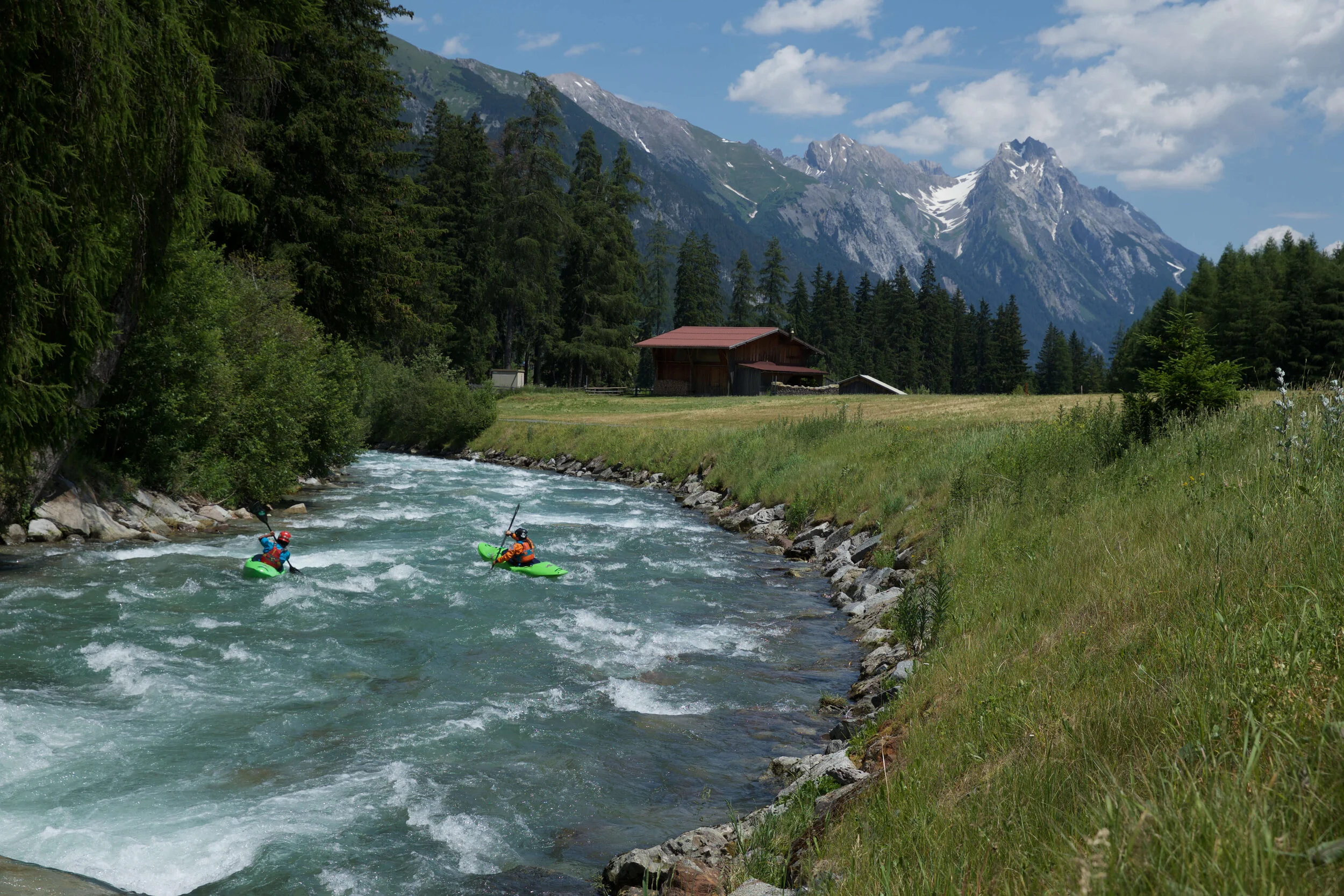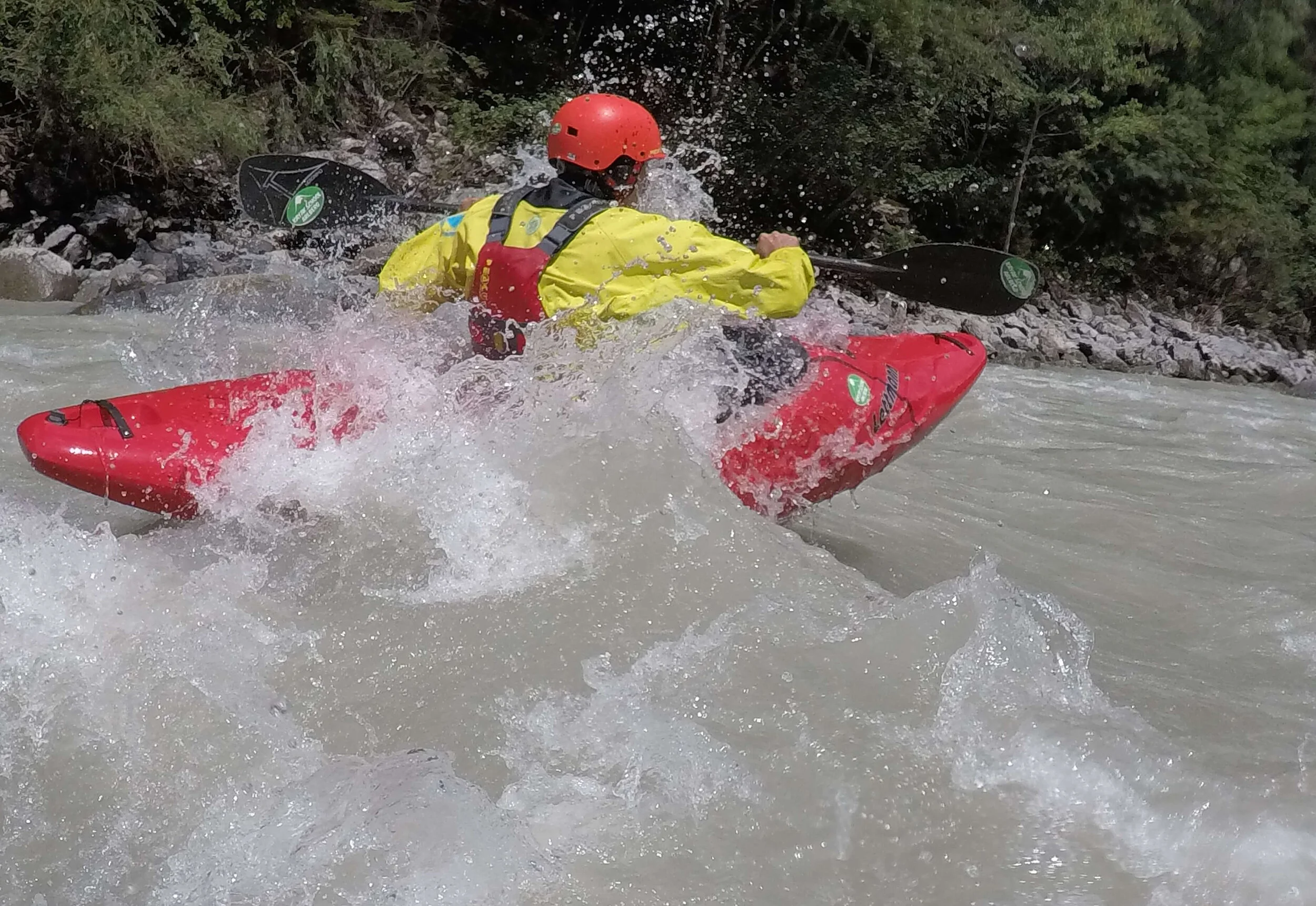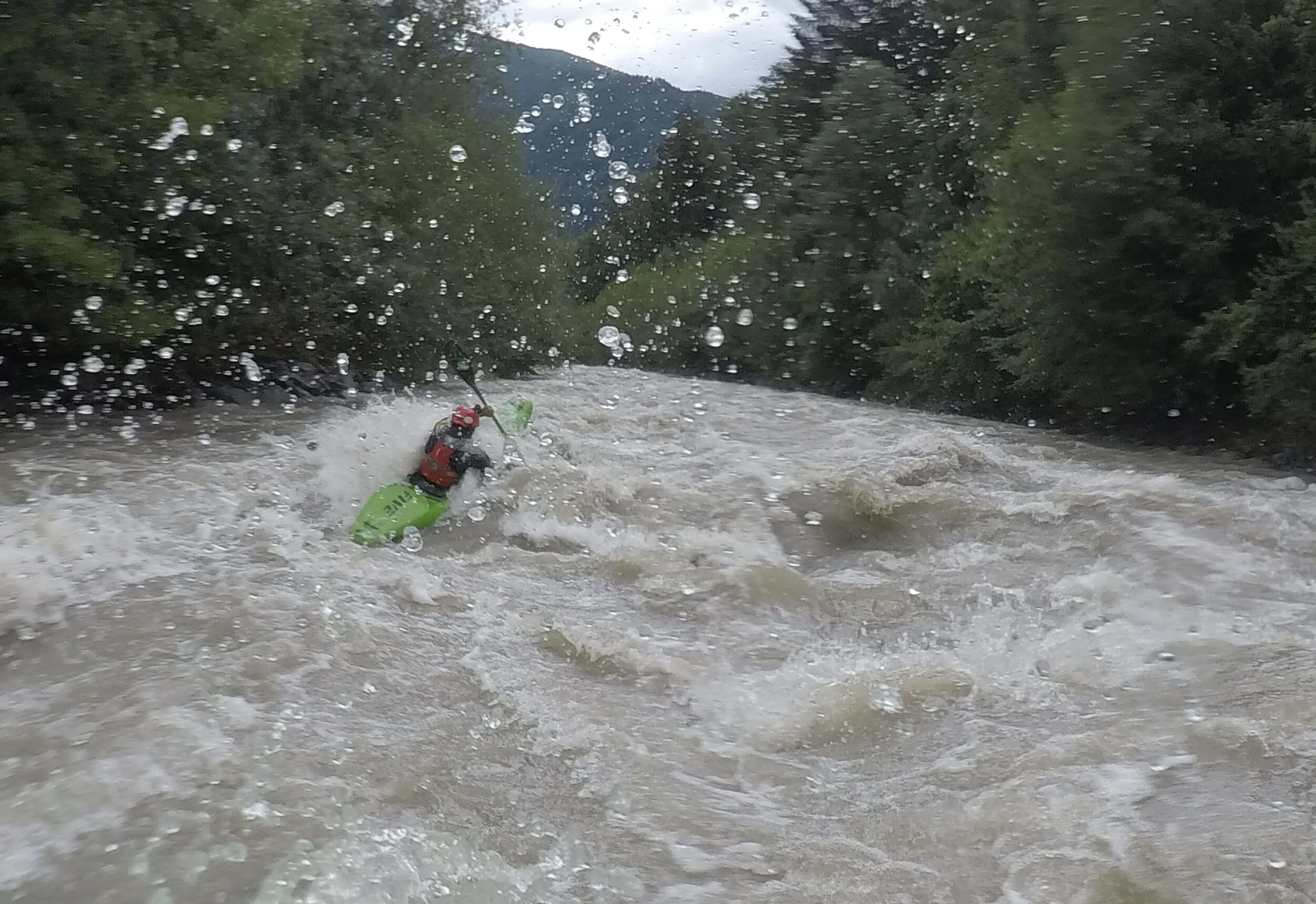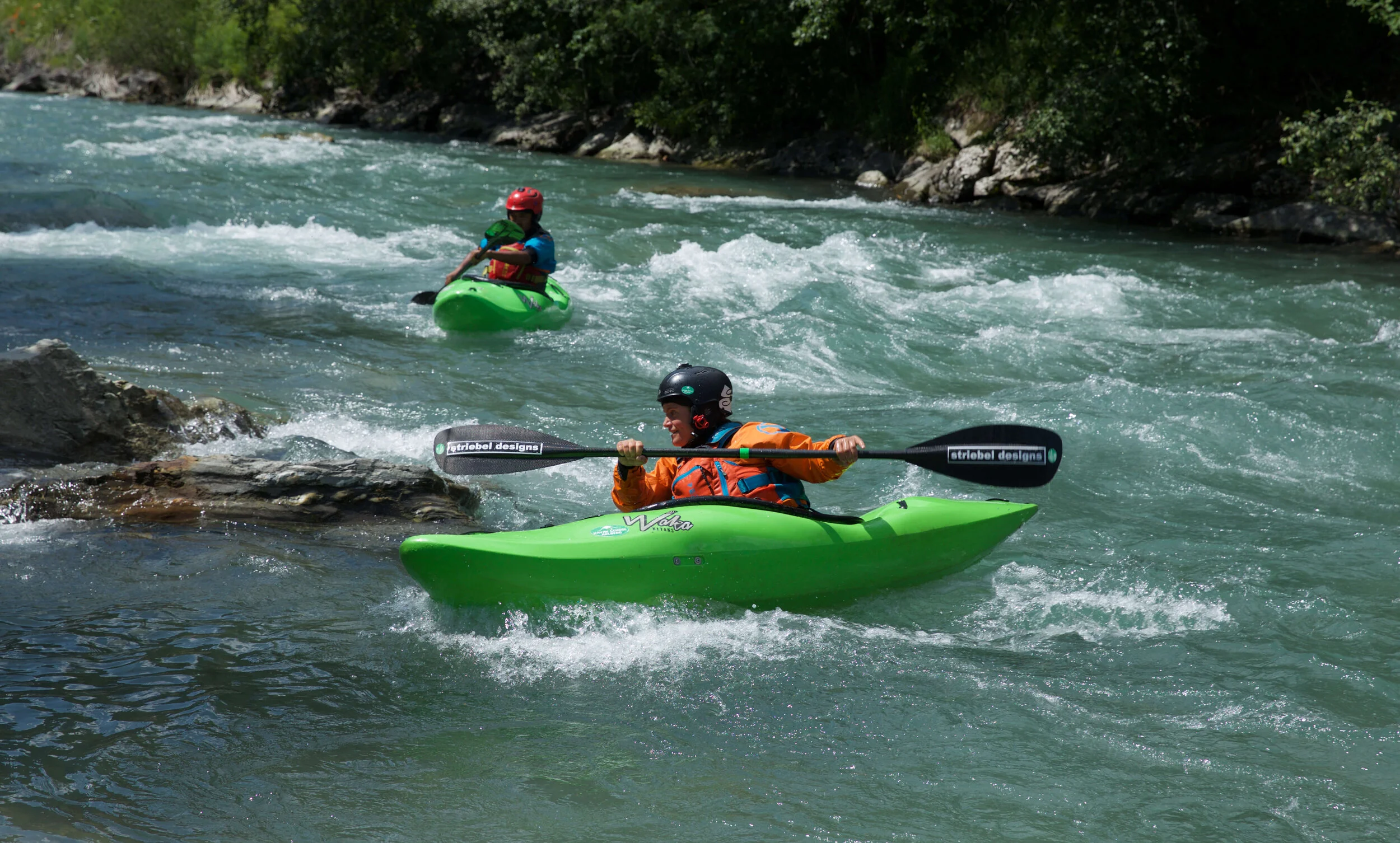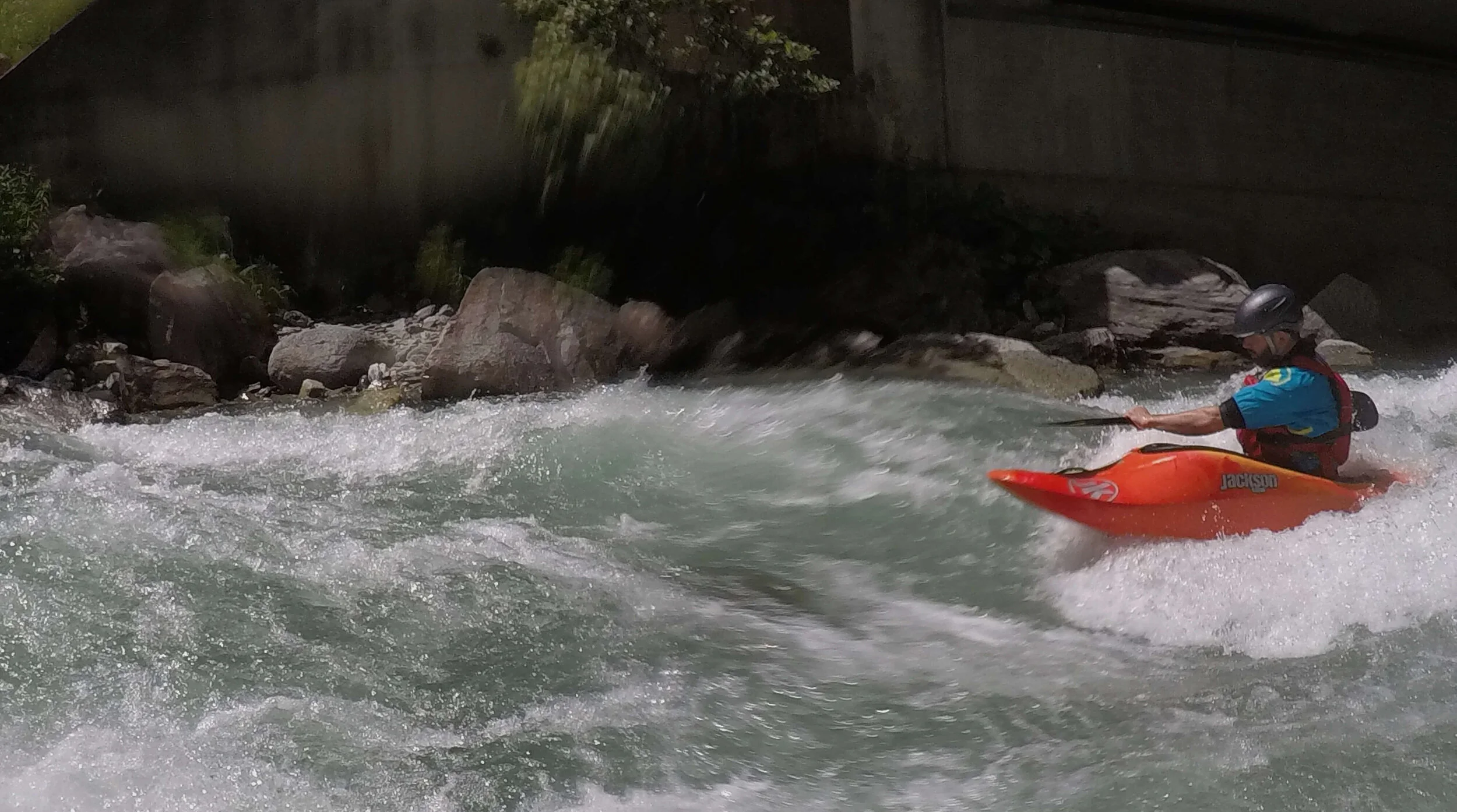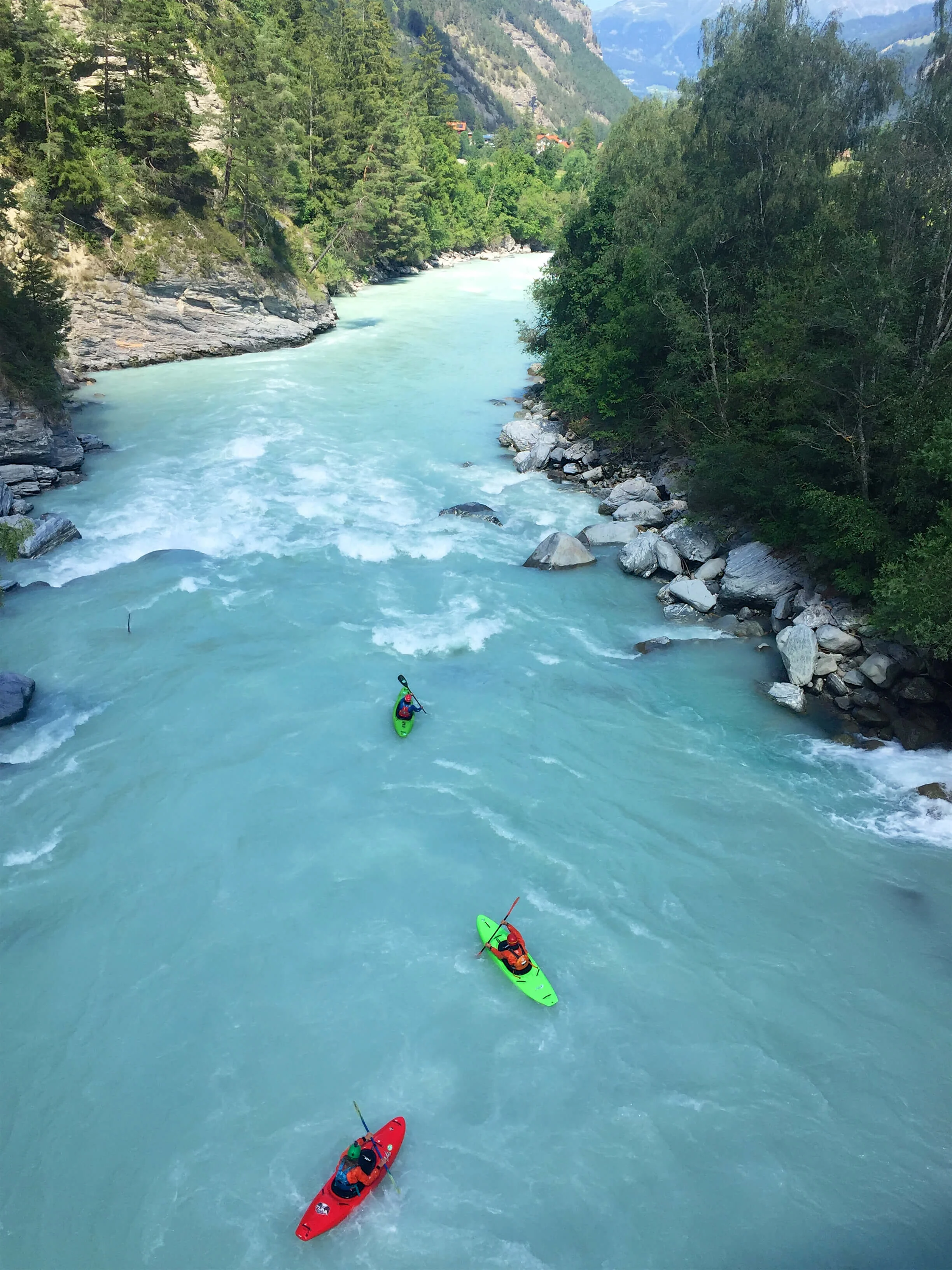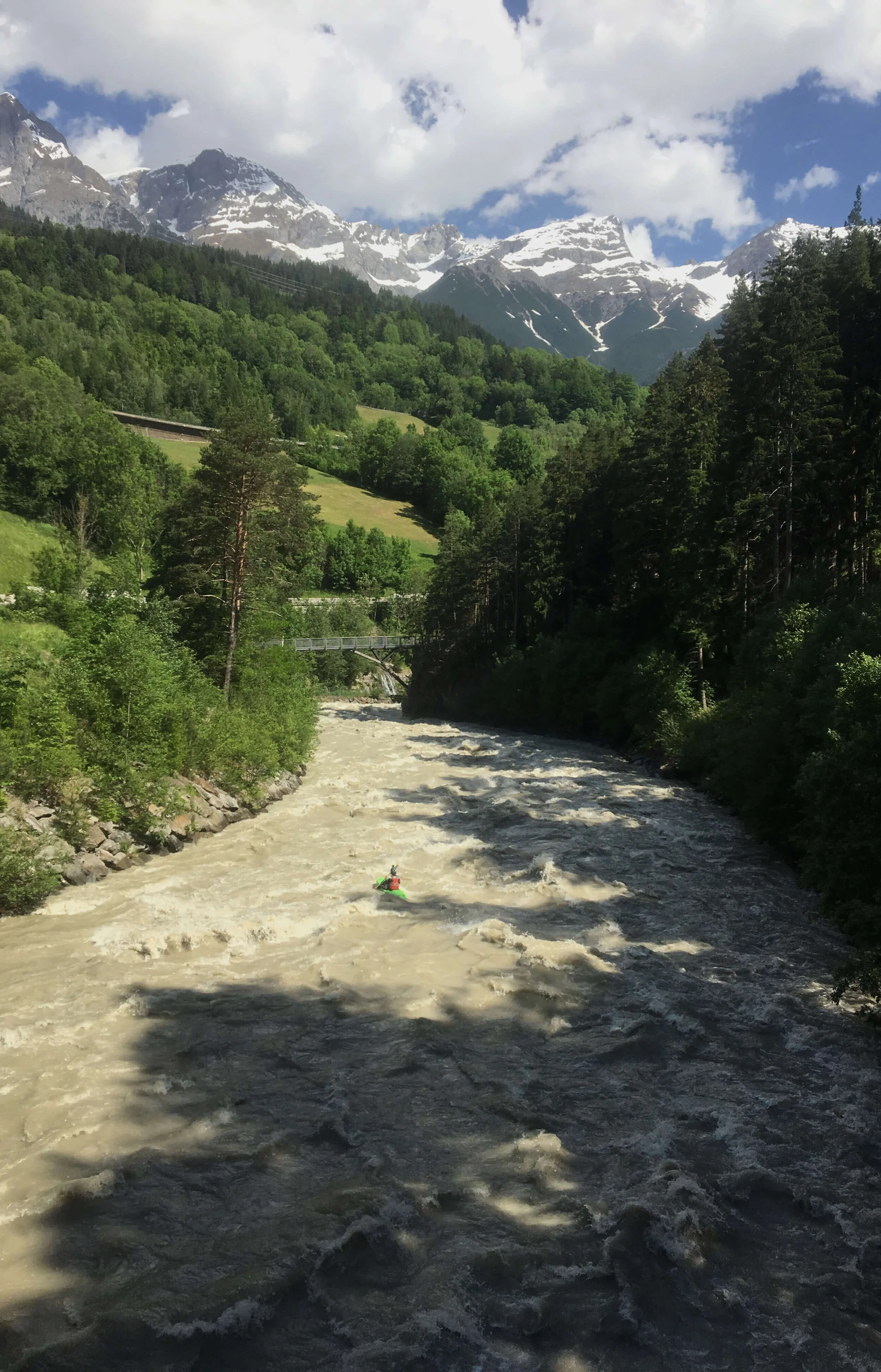Kayaking in Austria: the Essentials
Planning and preparation is a very important and integral part of any successful kayaking trip, expedition or mission! So what should you think about, when getting ready for a kayaking trip to Austria?!
Austria is situated in the heart of Europe. To the north is the powerhouse of Germany, to the south are Italy and Slovenia, to the east are the Czech and Slovak Republics with Switzerland and Lichtenstein to the west.
The Alps play a huge part in Austria’s climate, geography, demographics, culture and of course economy. It is said that just 30% of Austria is below 500 metres, making it not only a beautiful country but a kayaking Eldorado!
When to Go
Austria has 3 main kayaking seasons: Spring, Summer and Autumn.
Spring: In the Spring the main rivers will be relatively low. There is still snow in the mountains and it can take up to mid-June for the melt to really start feeding the main rivers in the West of Austria. However, towards the East the Spring can be the main season for creekers wanting a fix of steep, technical rivers with big slides or drops.
The weather is extremely unpredictable and you could have a cold snap come in and drop over half a metre of snow into the tree line! But it can also be crystal clear blue skies with temperatures touching the early 20s! If you consider camping, then be prepared for 3 seasons within a week. I usually recommend that you stay in a Pension (bed and breakfast) if there are just a few of you and if it is a bigger group, look at Ferienwohnung / Apartment (holiday homes with kitchen facilities).
Summer: In the height of the Summer the glaciers start to melt and with the odd thunderstorm at night, the bigger rivers will get pumping. The Inn is at its best in July and August and is the perfect place to learn to paddle big volume rapids such as you would get in the Himalayas.
Summer is a great time to be in Austria - July is my favourite time of the year. Pretty much all the rivers and creeks are running, the sun is out, the temperature is usually in the mid-20s, the snowcapped and glacier peaks are a brilliant white and the odd thunderstorm at night is keeping the skies clear for the following day. If you are camping, a tarp is an ideal piece of kit to make some shade and give you a little shelter if the skies open up while you are eating dinner or cracking another cold beer open!
Autumn: Once the temperature starts to drop at night in the mountains, the glaciers begin to keep their remaining ice and the rivers drop. This brings in all sorts of sections and rivers to kayak. For example the Extreme World Kayaking Championships (Sickline) used to take place at the beginning of October on the River Ötz. A lot of the deeper gorges are now runnable and you find a fantastic training ground that has similar rivers and characters as can be be found in the Andes such as Peru.
The Autumn can be more problematic than the Spring. It gets cold at night and you will need a warm jacket. During the day it can be warm enough for shorts and flip flops though be prepared again for 3 seasons in one day. The same rules apply for accommodation as in the Spring.
Winter: You can find a couple of sections of river to kayak such as Tumpen Falls on the Oetz or the Salzachöfen in Salzburg. However, temperatures can be easily below -10°C, snow will most likely make it difficult to get to the put-in or take-out and to be quite honest, as there is so much snow around we all go powder skiing!!
Where to Go
Most UK based kayakers head to the Landeck area on the West side of Austria. There is an old English speaking guide book and it has been a regular destination for University and Club kayakers for decades. But there are also other regions of Austria that have quality whitewater and as you would expect they still have the Austrian charm!
West: The area around the town of Landeck has plenty to offer the whitewater kayaker. The Inn is the biggest volume of river in the Alps (see C&KUK magazine’s article on the River Inn - July 2012), the Ötztal is a valley for the experience whitewater kayaker. The Stanzer Valley that leads to St Anton am Arlberg has the Rosanna with 4 sections from class I-II all the way up to the steep creeking class V high above the village. The Lech river is one with amazing views and again with different grades. The class V Lech Gorges are one of the best sections of river in the world!
Central: Salzburg and the surrounding area offers various rivers such as the Salzach (a popular rafting stretch), Saalach (Lofer) and also the Lammer. Though there are not as many rivers situated in one area like the other kayaking centres, however the rivers of Salzburg are all easily reachable on an outing from Styria or the east of Tirol. It is also good to note that you can paddle the rivers close to A10 (the main motorway heading north and south), so if you are heading to Slovenia then you can actually kayak the rivers of Salzburg as a warm up, cool down or just to break the journey!
East: Styria and Upper Austria have some quality whitewater. Salzkammergut is a region that covers the states of Styria, Upper Austria and Salzburg. It is at its best in the Spring where there are an abundance of creeks to kayak, catering for intermediates all the way to the expert. The Lower Talbach and the Gimbach are just two highlights and must run rivers in this area. In the Summer there are 3 great rivers to check out. The Enns is a big volume river carving its way through the beautiful Gesäuse National Park. The Salza is Austria’s equivalent to the Soča in Slovenia with crystal clear water, outstanding surroundings and fantastic place to improve your technique and abilities. Also the Koppentraun is worthy of attention. It is a medium volume river similar to the old Sanna of years ago but with more rapids and action - I would go to say this is Austria’s most loved class IV river and you can use the train for your shuttle!
South: The state of East Tirol gives amazing views of the famous Dolomite Mountain Range with dramatic rock formations. It also has a very temperate feel. The river Isel has plenty of options for whitewater kayakers of all abilities and there is a free guide that you can download for more information. There is a play feature here that has hosted the European Championships.
What to Take
Well this all depends on when you are coming, where you are going and with whom! If you are coming to run the BIG water of the River Inn throughout the Summer then I would suggest an all-round kayak such as the Waka Tuna, Gangsta and Tutea. They can run the hard stuff but also are a dream to surf some of those big glassy waves! If you are planning to go creeking, then kayaks like the Waka Stout and OG, Zet Five and Cross or the Lettmann Manta are fantastic kayaks for this style of kayaking. We hold all these boats in a kayak store and they come included on a course. For our Improver or Fundamental kayaking courses we also have the option of the Lettmann Granate and for the big guys a Zet Director!
There are not too many park and play features in Austria. But this is slowly changing with the big Winter ski resorts looking at making play features to bring in Summer tourism - St Anton am Arlberg is one such resort. It is one of the worlds leading ski resorts and is now keen to show that it can also be a Summer destination!
Got the boats figured out - next comes the kayaking apparel.
Kayaking apparel is also something very important. In the Summer you can normally tell the British kayakers apart as they will wear shortie cags on the river no matter what the temperature! However, in the Autumn or early Spring this could even turn the hardest of British kayakers into a quivering, shaking wreck! I would suggest a one dry-suit for the Spring and definitely for the Autumn. In the Summer however, a one dry-suit will be way too warm and uncomfortable. I must admit I love the combi cag from Peak UK. When the weather changes or the temperature of the river gets a little uncomfortable, then you can always put on the neoskin arms and you have the perfect cag for an Austrian Summer Road Trip!!
Who is Coming
Are there just a couple of you, is it a club or university annual trip, is it a recce for a future bigger kayaking trip to Austria. What are the kayaking abilities of everyone? Have you got enough instructors or guides, are they qualified to lead kayakers or instruct on Austrian rivers?
The composition of your group or team will really dictate in which area and what time of the year you want to come and visit Austria to kayak.
Why Austria
Planning a trip to Austria is relatively easy and uncomplicated. There are plenty of options with regards to getting here but also you have options on where, when and what regions and rivers to kayak.
Previously Austria has had a reputation of being a good grade harder than some of its Alpine neighbours with big volume rivers that are unrelenting. Tales of British kayakers and University kayaking clubs getting worked, having big swims and even groups ending up losing their precious kayaking equipment was commonplace or that evenings topic of conversation at one of the campsites situated by the river bank! However, it is not at all like this and what you tend to find is that after the initial fears and in-trepidation of coming to Austria the kayaking is very easy to get used to and the elation of running the classic big volume rivers far outweighs the initial nervousness!
In-fact, we have been running the Kayak School Arlberg in the West of Austria for the past 9 years, offering courses for beginners all the way to the experts so there are rivers for every type of whitewater kayaker.
On top of this the scenery is amazing, the Austrian’s are extremely friendly and even though the majority speak English if you try your German they will not laugh in your face like certain other European countries do! With regards to food the Austrians may not like the “haut cuisine” but kayakers will love the traditional mountain hut meals that are served throughout the country, fuelling ones body after a great days kayaking. If you cannot get enough carbs into your diet then there is always the beer! Austria has many different beers that can be enjoyed throughout the country and in some bizarre places (in most petrol stations beer can be consumed!).
Getting Here
There are various ways of reaching Austria:
Flights: With regular flights from the UK, Austria is a very easy and quick destination to get to. Major airports close to the rivers in Austria are: Innsbruck, Salzburg, Graz and Linz. Zurich in Switzerland is just 2 hours away if you are heading to the West of Austria and Munich in Germany is 2 hours away again from the West and Central parts of Austria.
Hiring a Car: It would be best and easiest to hire a car from an airport, if you are close to the cities of Salzburg, Graz or Innsbruck then there are opportunities there.
Driving: Getting here to Austria will take around 10-12 hours from the ferry ports of Calais or Dunkirk. There are a couple of routes, one is to head towards Germany and then blast down their mostly unrestricted Autobahns or you can head for Luxembourg where you can fill up with extremely cheap fuel and then head into Germany and down into Austria.
Route 1 via Luxembourg - E40 to Dunkerque, E42 to Namur, N4 to Luxembourg, A8 to Saarbrücken, Karlsruhe, Stuttgart then Ulm, A7 to Füssen, Fernpass to Austria and then the A12 to Landeck
Route 2 via Germany - E40 to Dunkerque, Brussels and then Aachen in Germany, A61 to Koblenz and Mannheim, A6 to Heilbronn, A81 to Stuttgart, A8 to Ulm, A7 to Füssen, Fernpass to Austria and then A12 to Landeck
If you are heading to the Central or Eastern regions of Austria then it is best to head towards Munich on the A8 and continue from there
Top Tips and Links:
Driving: Apart from your insurance, breakdown etc., you should also have in your car: a warning triangle, current first aid kit (the authorities have been known to check the life span of your first aid kit!) and there must be a fluorescent vest for the driver. If you break down make sure you put these vests on otherwise the Police will love explaining to you all that you really do not need or want to know about a fluorescent vest! Also do not forget to put your warning triangle out too!
To drive on the major roads you will need a “Vignette”, this is your motorway sticker and costs: For up to 10 days €8.50, Up to 2 months €24.80 or for one year €82.70.
At the time of writing in Autumn 2019 fuel in Austria was Petrol: 1l - €1.30, Diesel: 1L - €1.24
Fines: There are plenty of speed cameras and traps around, if you do not adhere to the speed limits especially before tunnels you will lose some pocket money for apres-kayaking activities! It should also be mentioned that there is a speed regulation that you may see on an Austrian motorway and it will have a letter “IGL” at the end, for example 100 IGL. This is an environment speed regulation, if you get caught speeding not only do you get a fine for speeding but another rather hefty fine for damaging the environment. You have been warned!
Responsible Tourism
This can be a hot topic of conversation not only for kayakers but also for the local communities. You have to remember that the rivers are situated in areas where there is not much heavy industry. The main source of income around the kayaking areas is tourism. So with this in mind here are a few tips to make your trip a happy and memorable one:
Do not wild camp! There are plenty of campsites and other cheaper accommodation options if you are on a budget.
Use the facilities on offer: petrol stations, local markets, cafe’s and restaurants, supermarkets and of course the bakery and the bars. Austria’s surrounding neighbours are renown for bringing everything with them and leaving their rubbish behind, this does nothing but cause friction and resentment!
If there is a farmers field to cross then walk along the side in one track! The Alpine meadows are not just there to make the place look nice, you have to remember that the grass needs to feed the farmers livestock in the Winter. The farmers higher up in the valley only get one to two cuts of grass in the Summer so those beautiful Alpine meadows are precious in every way!
Do not get naked for everyone to see when changing and also keep the music down. We lost a great place to put-in on the River Inn in Switzerland because of kayakers from a specific country’s attitude that did not go down well with the local villagers!
If you lose a kayak or equipment you must ring the Police to say that you are all safe!!! This will stop the Water Rescue being called out and searching for a kayaker that is safe and sound in the bar! Also the locals are very honest and so if the kayak is found the Police are usually called, so you will get your kayak back (in what condition is another matter).
When you go out for a meal, fill tank of your vehicle or head to the supermarket, keep the kayaks on the roof. They stand out and we get local people mentioning they saw kayakers on the river, at a restaurant, petrol garage or parked outside their accommodation. You get noticed easily!!
Finally: If you need some advice, get in touch with one of the local kayak schools. They are pretty helpful and they can point you in the right direction which can make your trip run all the more smoothly leaving great memories and an unforgettable experience!
To download a free guide just follow the links below:
There will be a free guide coming for the Rosanna River in the West of Austria that we in the Kayak School have written and again you can either download the guide from our website or collect it from the Tourist Office in St Anton am Arlberg in the early Summer.
More information will be available at our homepage.
River Levels:
The best thing to have on your smart phone is River App: https://www.riverapp.net/en. It has an abundance of gauges for Austria, Bavaria and the Engadine Region in Switzerland. Just be aware that the gauge for the Landeck Gorge is not correct!
Check List:
When to Go: Spring, Summer or Autumn
Where to Go: What centre or Region(s) to visit
What to Take: What type of kayaking - Creeking, River Running, Playboating etc
Who is Coming: Group composition - Beginners, Intermediates, Advanced Kayakers. Instructors or Guides, even a support or morale crew.
By what means: How to reach the kayaking centre or Region(s)
Have a great kayaking trip to Austria!
